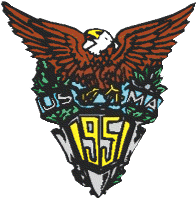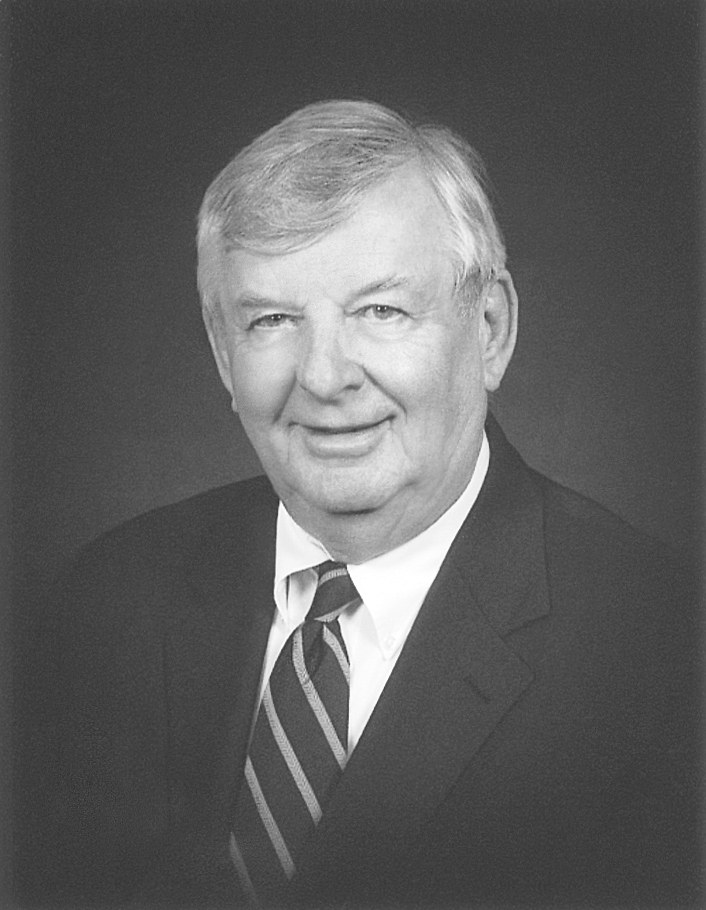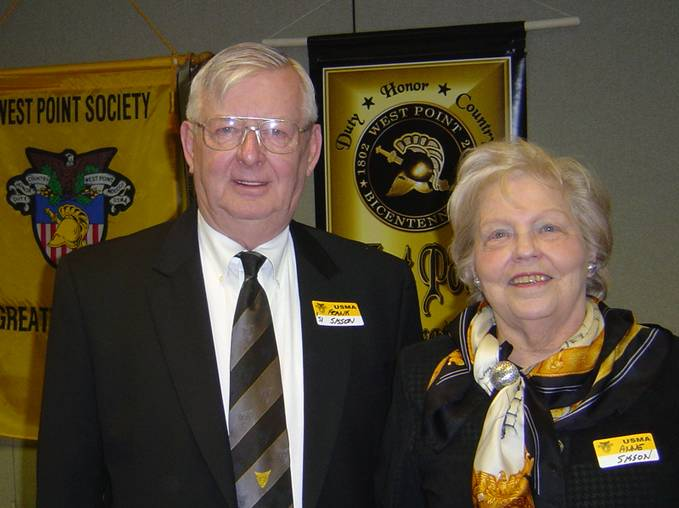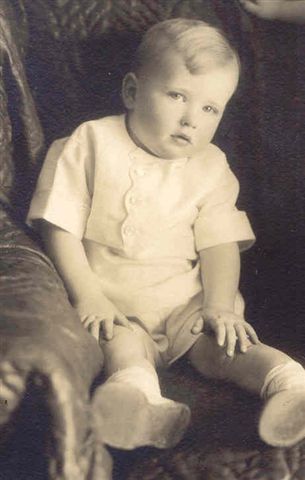
One of our Entrepreneurs
- USMA '51
Briefing
- Awards and
Decorations
- Class Casualties
- Class Roster
- District Engineers
- Monthly
Birthdates
- Oldest To
Youngest
- Our Days At
West Point
- Our FootBall
Team
- Our Soccer Team
- Our Baseball
Team
- Our Basketball
Team
- Our LaCrosse
Team
- Our Swimming
Stars
- Our Track Stars
- Where The
Stars Fell!
- Service To
Country
- Our Patriotism
- Our Infantrymen
- Our Artillerymen
- Rangers
- Source of
Appointment
- Service in
Reserves
- Retention Study
- SabreJet Pilots
- StratoFortress
Pilots
- The Other
Fly Boys
- Air Force Values
- H U A
Infantry
Lore
Frank Elliott Sisson, II was born in Brockton, MA on 15 February 1927 and was appointed to West Point from the 9th Congressional District. During his younger school years, Frank traveled with his family to various cities primarily in the southern part of the country and went to many different schools. His father was an engineer who built electrical power plants, each construction taking about one year. Ultimately, Frank's family settled in Woods Hole, Cape Cod, MA for his high school years.


He entered West Point from this home location. His West Point classmates recall: "From the shores of Massachusetts came "Sis"with his slow, easygoing nature that refused to be hardened by rule or regulation. His love of a good time and interest in others have made him welcome company in any gathering. He gave his free time in coaching those less endowed in academics. At home in the Golf course as well as in the classroom, Sis put in four useful years at the Academy." During his cadet days, Frank was on the Golf Team all four years, except he dislocated a finger during intramural baseball first class year and was unable to play golf after that. He went out for Hockey and was with the Howitzer staff plebe year; with the Camera Club first class year; and was a Cadet Sergeant his first class year.
Upon graduation, Frank went into the U.S. Air Force and after pilot training reported to the 310th Bomb Wing, Salina, Kansas, in 1953, to fly B-29 bombers. Frank was there for only a short time, a couple of months, as he volunteered to fly B-26 aircraft in the Korean conflict. In Japan, on the way to Korea, he was assigned to the 10th Radar Calibration Squadron, a TB-29 unit, at Yokota Air Base in Japan to calibrate radar sites in the Pacific Theater of Operations. The squadron had ground technical teams to peak the radar sites, and B-29s to fly as target aircraft to measure radar performance. During the two and a half years following, Frank flew calibration missions at all of the radar sites in the western pacific area, i.e. Japan, Okinawa, Philippines, Korea, and Guam. He also held the additional duty of squadron adjutant all of this time.
In 1957 Frank earned a Master of Science degree in Aeronautical Engineering from Air Force Institute of Technology (AFIT), Wright-Patterson AFB, OH. Following graduation from AFIT, Frank was assigned to the F100/F-108 Program Office, Air Force Research and Development Command, also located at Wright-Patterson AFB, so he did not have to relocate. Frank became the project officer for flight test, training systems and ground support systems for the F-108 long-range interceptor. This was an advanced, mach three, fighter aircraft, on the leading edge of the state-of-the-art in aircraft design.
After this, Frank was assigned to the ALRI program in 1959. This was an update program for the air-early-warning radar constellation aircraft, Lockheed RC-121, which was a manual system. The ALRI, airborne long range input, was an automated system using the same basic aircraft and providing continuous input in to the command center via analog to digital radar conversion and then data link to the ground. It was designated the EC-121H aircraft and became operational around 1963. This system preceded the Boeing E-3 AWACS program, which is still in service. Frank became the Air Force Test Director for this program and served as such until he was again assigned to graduate school in the spring of 1962.
In 1963, Frank earned a MS degree in Management from Rensselaer Polytechnic Institute, Troy, NY. His next assignment was as Director of Airborne Research Engineering at Hanscom Field from 1963 to 1966. During this time, Frank was responsible for building flying laboratories by having his team of engineers and private contractors design special modifications to KC-135, C-131, C-130, C-118 and U-2 aircraft. These flying laboratories were used to conduct various basic airborne research studies being conducted by the Air Force. Following this, Frank went overseas with the 374th Tactical Air Wing in Okinawa to fly C-130 aircraft in the Vietnam War where he served until 1969. He was awarded two Air Medals for meritorious achievement while participating in aerial flight during combat missions in Vietnam, and the Commendation Medal for distinguished service as Air Operations Officer for a special detachment of the 374th Tactical Air Wing at Kadena Air Base on Okinawa.
Frank retired from the United States Air Force in 1969 as a Major. Upon returning to the United States and completing the retirement process, in 1970, Frank went to work as an aerospace marketing manager with a leading aerospace fastener company in New Jersey. He was intent on getting four of his children educated. In this regard and to make a long story short, one son is a Harvard Law graduate. Another earned a Bachelor of Engineering from Stevens Tech; another earned an MBA degree from MIT's Sloan Fellow program, and a daughter graduated from Kent Place School in Summit, NJ, and completed a year of college before getting married. After a few years with the fastener company, Frank went on to an aviation export company, a consulting company in Washington, DC, and finally in 1986, to Beech Aircraft Company in Wichita, KS, as a program manager for an unmanned, advanced, state-of-the-art air reconnaissance vehicle. The air vehicle was ahead of its time, it was costly and the government never awarded the program to any company.
In 1988, Frank founded his own firm, Frank Sisson & Company, which he operated in Wichita, KS where he and his wife Anne still make their home. His company worked closely with the aircraft industry in Kansas and it represented a number of manufacturers who supplied engineered components to the aircraft industry. Frank retired from his company in 2005 and sold his interest to partners that had joined him prior to that time.
In early 2007, he is writing a book about his great grandfather, skipper of the whaler Milo who was confronted by the Confederate cruiser Shenandoah during the Civil War in what was to become a significant event in the naval history of the Civil War. Frank is a member of the Board of Directors of the West Point Society of Greater Wichita, a past member of the Greater Wichita Area Chamber of Commerce and member of the Tallgrass Country Club. Further, he is a past president of the Wichita Chapter of The Military Officers Association of America (MOAA) and past president of the Kansas Council of Chapters, MOAA.
Finally, Frank and Anne are the proud grandparents of eleven grandchildren.

Started out like this!!!

All Inquiries
to: Frank's
Webmaster
Frank's
Webmaster 